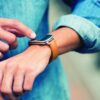News
COVID-19–related HCQ shortages affected rheumatology patients worldwide
November 6, 2020
Data from the Global Rheumatology Alliance Patient Experience Survey presented at ACR Convergence 2020 demonstrate that the severity of shortages differed widely across the globe.
News
First-of-its kind guideline on lipid monitoring in endocrine diseases
November 6, 2020
A new guideline from the Endocrine Society calls for heightened awareness of cholesterol management and treatment in endocrine diseases beyond diabetes; the aim is to make lipid panel routine in assessment.
News
COVID-19 in pregnancy raises risk of preterm birth and severe disease
November 5, 2020
Early data support counseling pregnant women about risks for severe illness associated with infection.
News
New case suggestive of in utero SARS-CoV-2 transmission
November 5, 2020
In this rare case of transmission of SARS-CoV-2 from a mother to her neonate, virus was detected in cord blood but not placenta.
News
Lions and tigers and anteaters? U.S. scientists scan the menagerie for COVID
November 5, 2020
Across the country, veterinarians and other researchers are scouring the animal kingdom for signs of the virus that causes COVID-19.
News
Common SARS-CoV-2 mutation may be making COVID-19 more contagious
November 5, 2020
In contrast to a greater variety of strains early in the pandemic, now 99.9% of circulating SARS-CoV-2 strains in the study feature the D614G mutation on the spike protein.
News
Obesity biggest risk for COVID-19 pneumonia, after age, male sex
November 5, 2020
The impact of obesity was most pronounced in women younger than 50 years.
![1]()
News
The SHM Fellow designation: Class of 2021
November 5, 2020
Fellows designations provide hospitalists with a distinguishing credential as established pioneers in the industry.
News
FIT unfit for inpatient, emergency settings
November 5, 2020
The inappropriate use of FIT in these settings had no positive effect on clinical decision-making.
![1]()
News
Biometric changes on fitness trackers, smartwatches detect COVID-19
November 5, 2020
Adding passively monitored physiologic data from wearable devices to self-reported symptom data enhances an app’s ability to discriminate between COVID-19 positivity and negativity, new data show.

